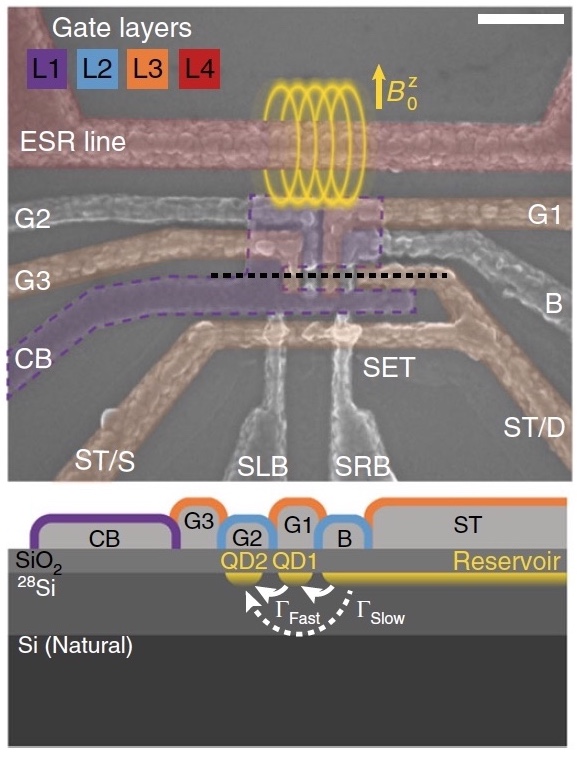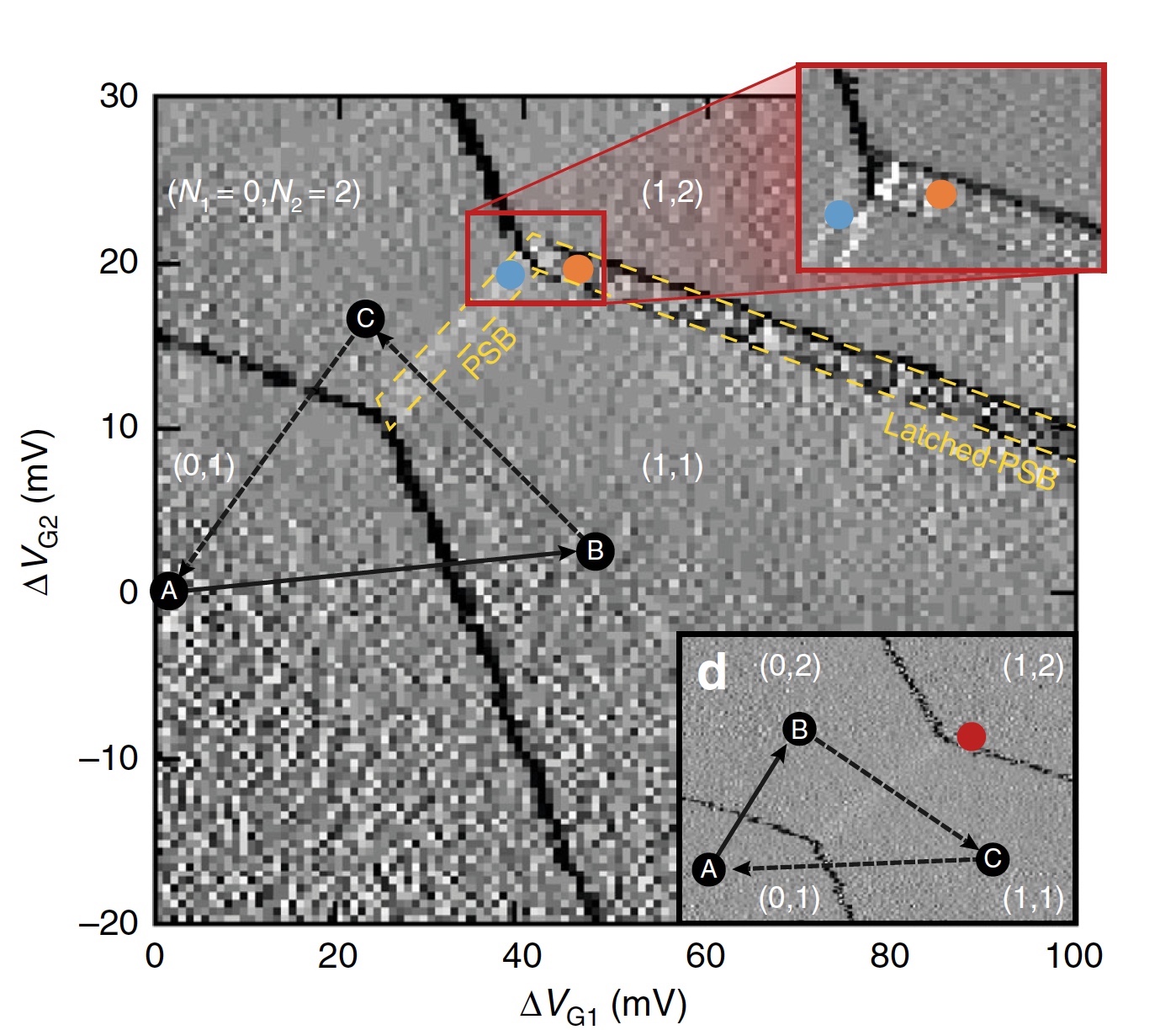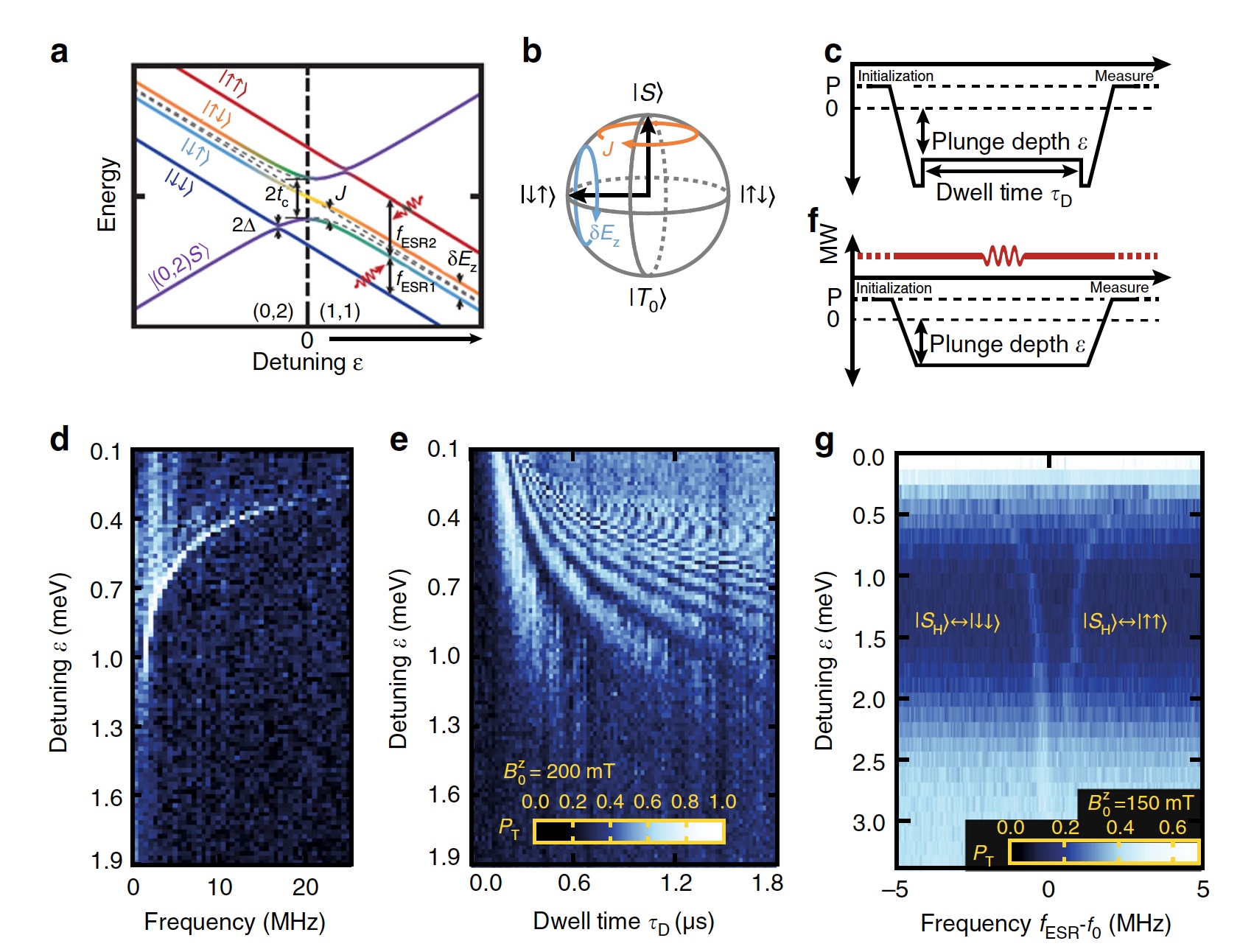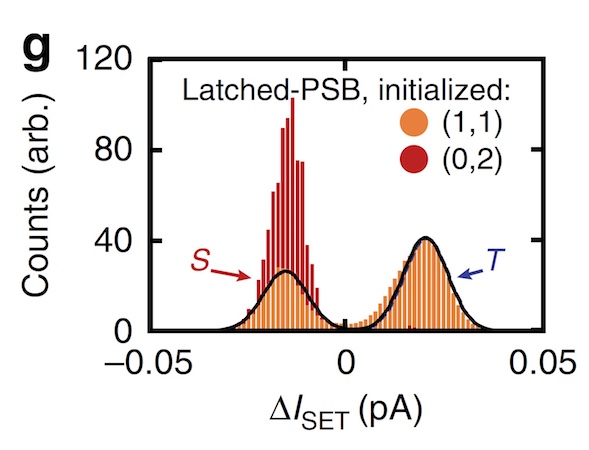Quantum processor based on spin resonance and manipulations with singlet-triplet system

Oh, those quantum technologies. They flooded the minds of scientists around the world, as the Pokemon GO at one time flooded the minds of smartphone users. Comparison is certainly not the best, because the first will benefit, the second - brought crowds in the parks, but not for the sake of fresh air or a picnic. Today we will understand the study, aimed at creating a scalable quantum processor that can find and fix errors. Such a processor requires control over a set of qubits (quantum bits) in parallel, while the process of detecting errors among the selected qubits proceeds. That is, we juggle with one hand, and with the second we show card tricks. The task, to put it mildly, is not an easy one. Let's find out how scientists from Australia were able to put such a complex idea into practice. Go.
The basis of the study
In order to realize the effective work of a new type of processors, scientists had to turn to not the most popular physical phenomena, namely, spin resonance. They believe that this may be the foundation for the implementation of parallel two-axis control. And if all this is supported by the Pauli * spin blocking technique , then it will be possible to implement local measurements of error detection parity.
The Pauli principle * - in quantum mechanics it is the principle that two identical fermions cannot be in the same quantum state at the same time.Hitherto, research based on quantum physics has tended more toward single-resonance or control / measurement using voltage on a double-spin singlet-triplet basis.
Multipleness * - characterization of the spin of an atom or molecule. For example, a singlet is a system of two particles whose total spin is 0.In this study, scientists want to combine both processes into one.
In the field of manipulation of single-spin qubits in silicon, the magnetic or electric field at microwave frequencies is most often used. This is due to the fact that microwave technologies are extremely developed, which allows for the implementation of a two-axis qubit control by changing the phase. Simple but effective.
In modern methods, such as the use of single-spin selective tunneling into an electronic reservoir, there are some drawbacks, according to researchers. Therefore, their use in dispersion sensing systems based on quantum gates is ineffective. But you just can’t leave this problem, because the latter have an excellent property - the electrodes can operate at higher temperatures in large-scale qubit structures, thus the critical overheating threshold rises greatly.
But with Pauli's spin blocking, things are much better, since this technique allows you to perform a pair of data reading in the process of error detection and correction. In addition, to control and manipulate the two-spin singlet-triplet structure, significantly lower microwave frequencies are needed, which makes it possible to greatly reduce the physical size of a possible device based on this technology.

Device structure
The images 1a and 1b show in detail the structure of the experimental device of a double quantum dot with a microwave transmission line, which was based on 28- Si metal oxide semiconductor (MOS) .
A microwave transmission line is needed to generate SET (single-electron transistor) pulses. The device also contains a SET sensor, which is necessary for achieving a single-charge sensitivity, which is essential for reading data from a singlet-triplet structure. The electrons were located in two quantum dots (QD1 and QD2 in the images above) by applying a positive voltage to the quantum gates (G1 and G2). The electronic reservoir is formed below the Si-SiO 2 surface by means of the positive displacement of the ST valve, which is also the main SET valve.
The results of the experiments

The image above shows a diagram of the stability of a double quantum dot system (hereinafter referred to as QD) in the charged region (N1, N2) when the device is operating. When electrons are placed in a double QD, the exchange interaction leads to energy splitting between the singlet and triplet spin states. This process can be controlled by electric impulses aimed at the nearest quantum gates.
We can also observe the manifestations of the Pauli spin blocking (hereinafter SBP). When the state transitions from (1, 1) to (0, 2), the tunneling from the electron QD1 to the electron QD2 occurs, but only if these two separated electrons were originally in the same spin state. But the triplet states are blocked due to the strong exchange interaction in the charge state (0, 2).
The fixation process occurs due to the asymmetric coupling of two quantum dots and an electronic reservoir. As a result, a metastable charge state of the reservoir of the quantum dot (1, 1) - (1, 2) is formed. The main engine of this process is tunneling between QD1, QD2 and the reservoir.
(1, 1) - (1, 2) the transition is clearly visible, unlike the case when the system was initially set to charge (0, 2). In this case, a very stable singlet state is observed, which is associated with strong energy splitting. As a result, areas of fixed SBPs are not observed.
An important feature of state fixation is that due to this, the “visibility” increases from 70% to 98%, that is, the probability of erroneous identification is reduced by about 16 times for this device based on silicon MOS.

Addressing of an individual qubit through spin resonance.
The next stage of the experiment was to test the possibility of addressing a certain cube. For this, an alternating magnetic field with a spin resonance pulse duration of 25 μs (microseconds) was applied. The level of detuning was quite high (about 4.2 GHz), and the magnetic field was 150 mT (millitesla). The result of the application of such parameters was a decrease in visibility, one of the reasons for the manifestation of which can be considered errors in reading data.

The graph above shows data from all experiments. Scientists note that with anticrossing (0, 2) - (1, 1), when the level of detuning is low, splitting occurs due to the exchange bond. But with a high level of detuning - due to the Zeeman effect, when the lines of the atomic spectra are split in a magnetic field.
Conclusions of researchers
The most important part of their work, researchers call the possibility of error analysis, which will allow to further exclude them from future quantum systems. Determining how certain errors affect the system is made possible through the use of spin blocking and analysis of various modes of operation of the device.

The graph above shows all the errors associated with the preparation and measurement process, which leads to the fact that visibility can not exceed the mark of 98% (orange field on the histogram).
In addition to the above errors, there are those related to the transition processes of the charge states (0, 2) → (1, 1) or (1, 1) → (0, 2).
The most significant error, according to scientists, is the one that occurs exactly at the moment of the adiabatic (thermodynamic process inside a macroscopic system, when it does not exchange heat with the environment) transmission to / from the area (1, 1).
It is extremely difficult to convey all the accuracy of this study, therefore those who wish to familiarize themselves with it in more detail can read the report of the research group, available here .
Epilogue
Scientists have succeeded for the first time in a silicon device to combine single-spin control through spin resonance and reading in a singlet-triplet structure. Experiments have shown that control and manipulation of such complex systems are quite possible. Devices that will be able to fully implement these techniques will also be able to work using a significantly lower magnetic field and at higher temperatures. Scientists intend to continue their research in order to improve their technology, eliminating errors as much as possible, or finding ways to fully level them.
This study, first of all, was aimed at understanding whether it is possible in the future to create sufficiently large-scale systems based on quantum technologies. For so far, such technologies have been considered as the basis for something, so to speak, small.
Thank you for staying with us. Do you like our articles? Want to see more interesting materials? Support us by placing an order or recommending to friends, 30% discount for Habr users on a unique analogue of the entry-level servers that we invented for you: The whole truth about VPS (KVM) E5-2650 v4 (6 Cores) 10GB DDR4 240GB SSD 1Gbps from $ 20 or how to share the server? (Options are available with RAID1 and RAID10, up to 24 cores and up to 40GB DDR4).
VPS (KVM) E5-2650 v4 (6 Cores) 10GB DDR4 240GB SSD 1Gbps until December for freewhen paying for a period of six months, you can order here .
Dell R730xd 2 times cheaper? Only we have 2 x Intel Dodeca-Core Xeon E5-2650v4 128GB DDR4 6x480GB SSD 1Gbps 100 TV from $ 249 in the Netherlands and the USA! Read about How to build an infrastructure building. class c using servers Dell R730xd E5-2650 v4 worth 9000 euros for a penny?
